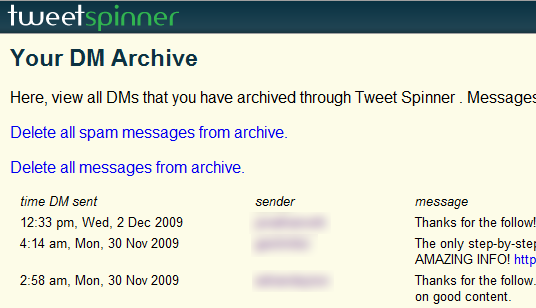This is a guest post by Chris Birk.
Social media and the sheer increase in number of content creation platforms has given managers, who specifically monitor a business’ reputation, many new challenges. One of the best descriptions of online reputation came from Matt Polsky on Jason Fall’s Social Media Explorer:
Reputation isn’t a single stationary object, but an equation that includes many pieces, such as being known for quality products or services, being likeable, actively engaging customers, or the ability to offer valuable and relevant content.
This may have quite a few of you thinking about where you stand. Are you taking all forms of the equation into account and being proactive or are you just focusing on being reactive and hoping for the best?
For those who are ready to start managing their reputation like a rock star, start with the following steps:
Damage Control
If you have never practiced any form of reputation management, you are going to want to start with damage control. This means going straight to Google and searching for your name, your business’ name, board member’s names and the CEO.
Think about what your users would type. If you have a specific product or service type in the name of that product or service, then go deeper and type in the name plus complaints or name plus reviews. You want to log what is being said on the internet about your company’s most vital components.
When searching for these terms on social, you are best using Google’s site search function so you don’t miss a beat. For instance, if my business was named Example, and I wanted to see what has been said about Example on Twitter, I would do the following:
site:twitter.com “Example”
The Man with the Plan
Be the man (or woman) with the plan, and start setting goals with the end in mind. This is where you take those negative results into mind and figure out a plan to either bury them or rectify the situation.
 When setting goals, ask yourself relevant questions, such as:
When setting goals, ask yourself relevant questions, such as:
- Why am I doing this?
- Who do I want to see my reviews?
- Why do I want people to find my reviews?
- Is simply viewing a positive/negative review a strong enough call to action?
Be sure when you do set goals, that you do set goals that are realistic. Nothing is more demoralizing than setting a goal that will never be reached.
For example, a solid reputation management goal could be, “I want to respond to all negative reviews or comments within 24 hours of them being posted.” Another solid goal could be, “I want my potential customers to view properties I own on the first page of search results, when searching for my business’ reviews.”
Manage Your Social Status
Once you have a solid grasp on your plan, start executing. I would recommend starting with social. Social media gives you the ability to communicate in real-time with those who are closest to you – you customer base.
Customer interaction allows you to build relationships, and gives you the ability to develop brand advocates through offering incentives, promotional codes, and sneak peeks at the latest products or services you have going out.
As with search, you can also set alerts for your social profiles through free tools. The best one I have found so far is called Social Mention, and it works very similar to Google Alerts.
Setting up alerts is a must. If you want to set a positive tone, responding to negative comments within 12 hours is critical. After that 12 hour window, you lose the viewers as well as the likelihood of the person who placed the comment to respond.
In addition to creating alerts and a quick response time, you should focus on providing your social following with value. As I mentioned above, great ways of doing this is through incentives.
Some companies do this better than others do; however, one example that I can’t get enough of is from Domino’s Pizza UK. A couple years ago, Domino’s UK produced a campaign called “Superfans”, which provided their most loyal customers with promo codes and free offers. To make things even better, Domino’s showed the users where they ranked among other users of the page and gave better prizes and rankings to those who interacted and shared the most content from Domino’s UK.
How great is it to have your customers competing to provide your business with free word of mouth marketing?
Own the First Page
Managing your social presence isn’t the only tactic. If you want to have a rounded approach reputation management, you are going to want to own the first page of search results for key reputation keywords, such as your name, your name plus reviews and your name plus complaints.
Remember how I said to log negative results in the first step? This is where you put that to use. Over and over I hear the question “how can I get rid of this result?” Well, the truth is, unless you own the site, you can’t; however, there is a loop hole provided by Matt Cutts at Google. Cutts said:
Instead [of removing results], you can try to reduce its visibility in the search results by proactively publishing useful, positive information about yourself or your business. If you can get stuff that you want people to see to outperform the stuff you don’t want them to see, you’ll be able to reduce the amount of harm that that negative or embarrassing content can do to your reputation.
At first, it may seem wrong to hide results, but if you are dealing with a real crisis, you will change your mind fairly quick. You want to bump up your results and leave the negative ones in the dust. Like Cutts said, make news, publish new information that has a chance to rank over the rest. Once you get this content published, use basic SEO tactics and get links pointed to these properties to get them ranking above the rest.
In addition to that you can even take advantage of exact match domain names and buy your business’ name plus reviews. For example, Veterans United Home Loans hosts reviews on their user-friendly site Veterans United Reviews.com. This not only helps them in the SERPs, but helps their reputation as well.
Manage Complaints
Even if you have great social media skills, amazing SEO, a trustworthy product and compelling content, you still are going to have a disgruntled customer at some point. Whenever you receive a negative comment, post, tweet or Facebook post, handle it with speed and concern. You don’t want to let these fester. Remember that 12-hour window? The quicker you respond, the higher your chances are for resolving the situation and possibly getting a brand advocate out of the ordeal.
Even if you can’t make a person happy, do your best to show good faith so other potential customers see you are willing to connect with individuals and rectify problems.
Your online reputation will never be spotless, that’s just a fact of business; however, you can still be proactive to keep the negative comments down and help lessen or prevent PR disasters.
Chris Birk is a recovering journalist and the Director of Content and Communications for Veterans United Home Loans. Visit with Chris on Twitter or on Google+.






Thanks for the tip about “SOCIAL MENTION” – it’s off the map!
These are great tips on making sure you are aware of your online presence on Google and staying on top of it. Which is a much better plan than ‘hoping for the best’ as many people do.
Being proactive is so important and responding to any issues professionally and in a timely manner will make it easier to keep a better reputation than if you just ignore customers.
Great post, thanks.
Editor’s Note: Sorry, as per my blog policy, you should not provide SEO in your name.